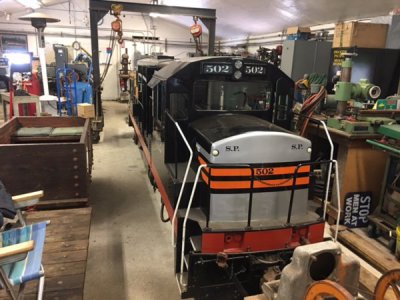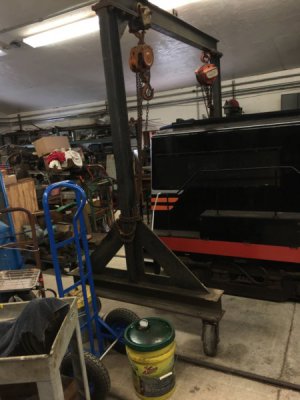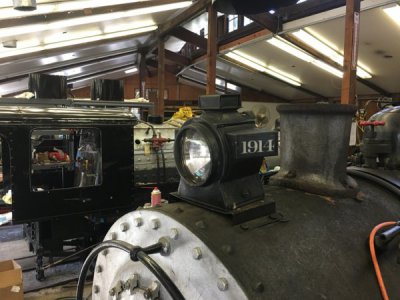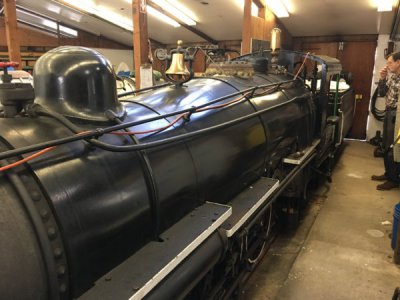I didn't measure this unit, but the web site listed above shows the assembly is 18" tall and 21" horizontal arm. Seems about right for what I saw on site. It's Rated at 500# max load. Hardly a towering man killer as some have suggested. At least I didn't see any pile of corpses, crushed hard hats, or misc body parts laying about the shop.
They also have a shop built gantry that looks pretty well suited to the heavy lifting they occasionally do. One of the photos below shows it straddling their road diesel ( just opposite the lathe).
The mechanical guys (and gals) maintaining the railroad have been at it now for 35 years or so. They seem competent in keeping their three 102 year old steam locomotives, a diesel road switcher, and a steam powered wrecking crane in operational service. So, I trust their deployment of machinery and maintenance practices. The rolling stock and Steamers originally were used as people movers during the 1915 San Francisco Exposition, then latter saved from the scrap man in the early 1970's by Al Smith, of Orchard Supply fame. The diesel came into inventory around 1980, if I remember correctly. Don't have a photo, but the club members also scratch built a fully operational 5" scale RR construction crane to assist with ROW maintenance and any derailments that might occur. Al brought the RR to his 3000 acre ranch near Davenport and established a non profit trust and land grant to the UCSB to ensure the RR would be maintained and supported in perpetuity, after his passing. Today the RR is operated and maintained as a volunteer organization, supported by the UCSB Engineering department, and a substantial membership of Live steam club members - much like 7 1/2" ga. live steam clubs - only everything here is 19" ga. It is quite an operation, albeit low key, with 1.5 mile of track on the UC owned Swanton ranch property, and always interested in recruiting new members. One of the benefits of membership is the opportunity to OJT into becoming a steam engineer running their locomotives during public run days.
Oh well, Back to hoist... At the time of my visit, I thought the chuck in the photo looked to be around 100 lbs deadweight, more or less. More than I want muscle around at arms length anymore.
One of my lathes is sitting up against a wall.. another 14" lathe is sitting opposite, in the middle of the shop. I suppose one could rig up some sort of floor mount, ala engine stand style, on the backside of either machine, that could hold a vertical post, apon which one could mount the crane part. Still a cool idea I think.
Glenn









